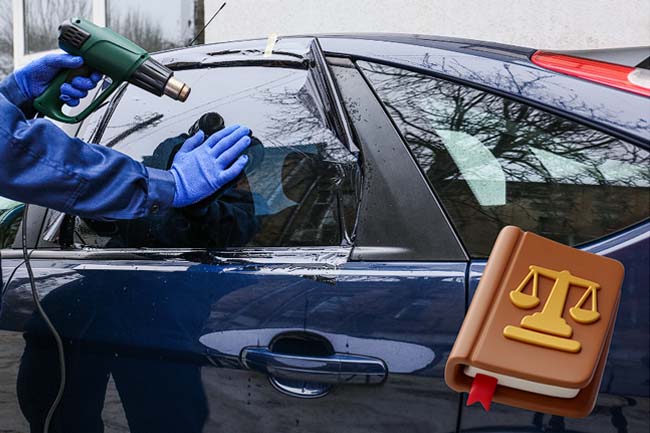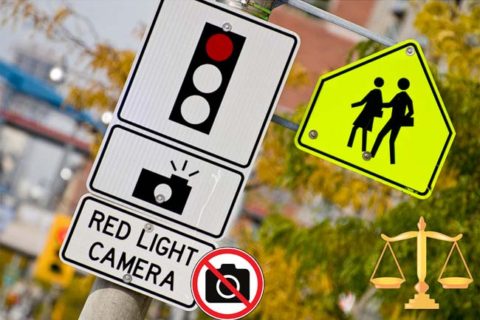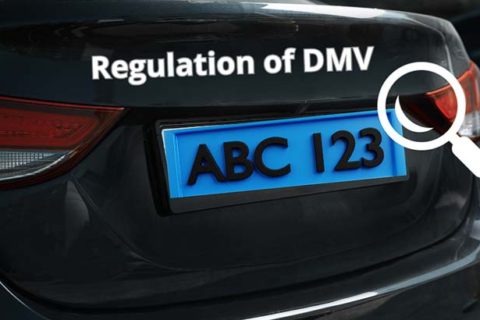For those of you who have medical conditions, installing window films on your car is a must. However, darker window tints can control UV radiation, sun glare, and heat, which can worsen their health, making it more severe and dangerous.

But there are several requirements you should meet, including specific medical conditions that are allowed and the permissible levels of window tint. Still, regulations regarding car window tinting can vary from one state to another, including in Virginia.
So, if you have a certain medical condition related to sun exposure and plan to use window tint, it’s best for you to find out everything about it in accordance with Virginia law.
Virginia Law about Car Window Tint
The Code of Virginia, Section § 46.2-1052, explains the regulations about tinting films, signs, stickers, and decals on car windshields, along with the penalties people may get if the rules are not obeyed.
https://law.lis.virginia.gov/vacode/title46.2/chapter10/section46.2-1052/
In an effort to increase awareness of driver safety and the visibility of law enforcement, the state of Virginia began enforcing regulations on car window tinting in 1999. Over the years, Virginia laws have undergone changes, allowing for modern practices and trends.
There are two things that are regulated in this law, including:
-
- Which car window can be tinted
- How much light they’ll allow
The amount of light allowed into the vehicle is based on the percentage per window type.
For example, you may be allowed to tint your rear side windows no less than 35%, and it can block the light by about 60%. But for the front side windows, you can allow the light no less than 50%, and it can block the light no more than 50%.
Why is the level of tinting on the rear side window of a car higher? It is because law enforcement officers or other drivers do not really care about passengers in the back seat. If a traffic violation occurs, the car’s driver must be responsible.
The Percentage of Light Allowed into the Car
The percentage of window films installed on your car basically indicates how much light transmission enters the tint. It means that the lower the percentage, the darker the film will appear.
When it comes to the light percentage allowed into the vehicle, it can vary depending on an individual’s medical condition; either they require protection from sunlight or they need bright artificial light.
Every state also has its own regulations about the percentage of light entering the windshield, windows, and rear windows. With medical exemption, drivers who have medical authorization can tint their windshields, which can allow approximately 35% of the light to reach the top 5 inches or the AS-1 line.
Another option is to tint the windshield entirely, which can allow about 70% of the light, which means it can block the light only up to 30%. According to Virginia law, window tint that is less than 20 percent will fail inspection and be considered invalid, so your actions may be in violation.
To make it easier for you to know the percentage of light allowed, we’ll show you the table from the Virginia DMV, as follows:
With Medical Authorization
|
Vehicle Window |
Percentage Allowed |
| Windshield | 35% –top 5 inches or to AS-1 line or 70% –entire windshield |
| Front side windows | 35% |
| Rear side windows | 35% |
| Rear window | 35% |
Without Medical Authorization
|
Vehicle Window |
Regular Passenger Vehicles |
Multi-Use Passenger Vehicles |
| Windshield | No sun-shading allowed | No sun-shading allowed |
| Front side windows | 50% | 50% |
| Rear side windows | 35% | No limitations |
| Rear window | 35% | No limitations |
How to Obtain Medical Authorization for Window Tints in Virginia
A medical authorization is issued by the Virginia Department of Motor Vehicles to anyone who needs protection from sunlight or bright artificial light due to certain medical conditions.
When visiting a doctor, you must clearly explain what you’re experiencing. Then, the doctor will check your symptoms. It is possible that a series of examinations will be conducted to diagnose your disease. If found, a signed doctor’s statement will be provided indicating your medical needs.
After that, you can submit a completed Sun-Shading Medical Authorization Application (MED-20), along with vehicle information and a statement from the doctor. Then, send it to:
Data Integrity
Post Office Box 27412
Richmond, Virginia, 23269-0001
After your application is received, Data Integrity will review it. If it is approved, you may need to visit the DMV office since they will give you a new registration card with a printed “sun-shading” in the Special Conditions space. You can use the registration card as verification, confirming that the vehicle is allowed to have sunshades.
After having the medical authorization, they can put the window tint on their car. The sun-shading protection is only valid until the driver’s medical condition improves or until the vehicle is sold to someone else. If the situation is like that, the window tints should be removed from the car’s window at that time.
Who Can Qualify for Window Tints in Virginia?
In Virginia, anyone who obtains medical authorization is eligible to use window tints on their car.
As mentioned earlier, medical authorization can only be issued to individuals who have certain medical conditions under a physician’s examination. As long as there is no medical clearance, they’re not allowed to install window tints on their cars.
People with the following medical conditions qualify for window tints in Virginia:
1. Albinism
When someone suffers from albinism, the person’s body cannot produce melanin in the right amount. When there is little pigment in the skin, they will be sensitive to sunlight, so this will cause their vision to be disturbed.
This congenital condition can also cause abnormal eye movements. Usually, most albinos use glasses to drive vehicles, but their skin and eyes will be sensitive. To prevent unwanted things from happening while driving, window tints must be installed on their car to control symptoms that may arise suddenly.
The doctor will surely provide medical authorization to people with albinism that they can use for window tints. However, albinos have extreme photosensitivity in their eyes and skin. If they continue to be exposed to sunlight, they are at higher risk of developing skin cancer—basal and squamous cell carcinoma are the two most common types of skin cancer that often affect albinos.
2. Bloom Syndrome
People with Bloom syndrome usually have low birth weight, short stature, and photosensitivity. They can experience a butterfly rash on the face down to the nose and cheeks when exposed to sunlight. The rash can enlarge, with light and dark spots on the skin all over the back of the hands and arms.
Frequent contact with sunlight can cause sufferers to experience redness of the skin and dilated blood vessels, as well as being susceptible to melanoma. Sure, the severity can be reduced by installing window film on their vehicles to control conditions that may arise.
3. Cockayne Syndrome
Cockayne syndrome is known as a genetic disease that is classified into three levels (Type I, II, or III) based on the severity of the patient’s symptoms and age. In infants and children, this syndrome causes developmental delays and neurological dysfunction.
Premature aging and sensitivity to light are other indications of this syndrome. There’s no doubt that people with Cockayne syndrome will suffer very severe skin damage because the body’s cells cannot repair it due to damaged genes due to UV rays and DNA.
If left exposed to sunlight for too long, this increases their chances of developing skin cancer, blisters, and photosensitive skin. Of course, it’s worth it for them to get medical clearance for window tints.
4. Solar Urticaria or Sun Allergy
People with solar urticaria will experience chronic itching when their skin is exposed to UV rays. The hives usually appear less than 30 minutes after sun exposure. Some of the accompanying symptoms include:
-
- Burning feeling on the skin
- Severe stinging sensation
- Dizzy
- headache
- Nausea and vomiting
- Hard to breathe
- Low blood pressure
Solar urticaria can occur at any time when chemicals in the patient’s body react to UV radiation, causing an allergic reaction. Some people may experience chronic flare-ups, while others only get them a few times a year. By installing window tints on your windshield and car windows, it will block UV rays, thereby preventing solar urticaria.
5. Erythropoietic Protoporphyria
Erythropoietic protoporphyria (EPP) is a genetic disorder and a rare disease with painful symptoms of photosensitivity. When symptoms appear, sufferers will feel a burning sensation accompanied by swelling, itching, and redness of the skin.
Exposure to the sun coming in through car windows can cause severe skin rashes. However, UV rays can also penetrate windshields and car windows. So, it’s best to use dark tint on vehicle windows to protect your skin.
6. Systemic Lupus Erythematosus
Systemic lupus erythematosus (SLE), sometimes simply called lupus, is an autoimmune disease in which survivors suffer from marked photosensitivity, and the condition worsens when their skin is exposed to UVB and UVA rays.
The National Resource Center on Lupus reported that about 1.5 million people in the United States suffer from lupus, and women make up the majority, almost 90%.
When exposed to sunlight, even if it is light, it will worsen symptoms such as skin rashes. In addition, systemic sunlight can cause lupus recurrence, including:
-
- Fever
- Arthritis
- Kidney problems
- Extreme fatigue
- Joint pain
- Swelling of internal organs
- Painful skin rash
Apart from applying sunscreen every time you leave the house, installing window tints is also highly recommended for people with SLE.
7. Xeroderma Pigmentosum
Xeroderma pigmentosum is a congenital skin disease where a person will suffer from severe sunburn, such as reddish and blistered skin, which develops into spots. When they are exposed to UV rays for even a short time, their sensitive eyes will become red, irritated, and cloudy, especially if they do not use eye protection.
During life, this disease tends to increase various types of cancer, especially on the lips, eyelids, and face.
Genetic Home Reference revealed that one in a million people in the United States and Europe suffer from xeroderma pigmentosum. But this skin disease is more common in regions such as Japan, the Middle East, and North Africa.
Well, those are several medical conditions that are really eligible for installing window tints on the car.

A bookworm and researcher especially related to law and citizenship education. I spend time every day in front of the internet and the campus library.





